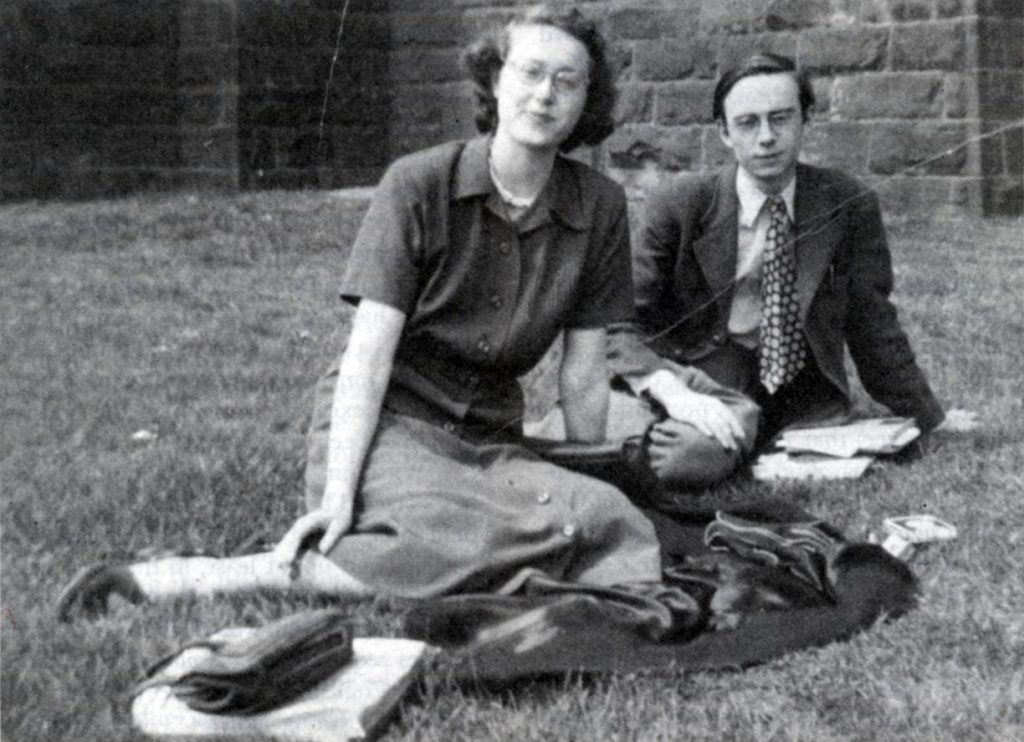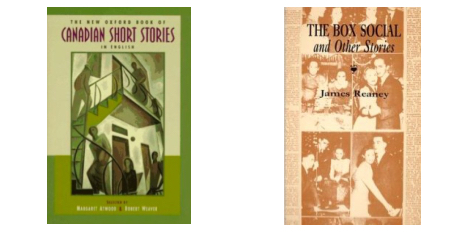Sunday November 6 at 2:00 pm EDT — Join us at Wordsfest for this year’s James Reaney Memorial Lecture and celebrate the short stories of Southwestern Ontario writers James Reaney and Colleen Thibaudeau.

Kydra Ryan and Adam Corrigan Holowitz of London’s AlvegoRoot Theatre will perform two of James Reaney’s short stories, “The Box Social” and “The Bully”, as well as Colleen Thibaudeau’s story “Wild Turkeys”.
Host Carolyn Doyle will lead a discussion of these three stories written when James Reaney and Colleen Thibaudeau were in their early twenties.
Registration is free for this Zoom presentation: https://westernuniversity.zoom.us/webinar/register/WN_1o-GLvU0RO2Atk8HAbdDig

More about James Reaney and Colleen Thibaudeau’s short stories
James Reaney and Colleen Thibaudeau met in 1945 at the University of Toronto and they both had poems and short stories published in The Undergrad, the University College magazine. Both had common background in coming from outside Toronto to attend university and having grown up in smaller communities. James Reaney grew up on a farm near Stratford, Ontario, and Colleen Thibaudeau grew up in St. Thomas, Ontario and also in Markdale, Ontario, where her father’s family had a farm.

New to big-city life themselves, it is not surprising that their early writing features characters who struggle to move beyond the limits of rural society. Like the people they write about, they found solace and inspiration in the world they knew best.
All three stories (“Wild Turkeys” (1947), The Box Social” (1947), and “The Bully” (1950)) deal with family life in rural communities and the challenges social isolation brings to advancing one’s social and economic position.
In Thibaudeau’s “Wild Turkeys”, Aunt Belle has the love and support of her family to guide her through her youthful romance in 1880s Grey County. Many years later she sees her niece trying to stay immersed in her university studies, and she shares the story of her heartbreak to help her niece gain a new perspective and a new resolve to put her own budding romance second.
Such open communication is not possible for the heroine of Reaney’s “The Box Social”, and she must go alone to the social event at the school to confront her former lover and make his betrayal public. The family in “The Bully” approves of the hero’s wish to be a teacher, but expects him to solve all the difficulties he faces as a shy newcomer in the unfamiliar environment of the high school.
“The Bully” and “The Box Social” have been called “the first examples of a modern tradition called Southern Ontario Gothic” because of “their use of Gothic elements of the macabre.”[1] “What makes this locale so prone to Gothic tales is the failure of communication between family members or social groups. In the absence of communication, strange projections and psychological grotesqueries spring up and rapidly grow to unmanageable proportions.”[2]
For poet Jay Macpherson, Reaney’s “The Bully” “turns on the contrast between crushing reality and the liberating dream.”[3] It is the hero’s ability to dream his way out of his prison that saves him from being destroyed by having to withdraw from the school. The heroine of “The Box Social” also finds redemption by confronting her oppressor and realizing she can get past her hatred for him.
In Thibaudeau’s story “Wild Turkeys”, the passage of time helps Aunt Belle overcome her sadness about her schoolteacher suitor moving on. “After all I had been raised barefoot in a log house, but there was no need to make things harder for us all. I learned the millinery and then your uncle Peter Martin came along. He had a new barn and three hundred acres…” (WT 26) She looks back on her life on the farm as idyllic despite all the chores and racing after the errant turkey hen: “In the old days it seemed as if all the mornings were like the first morning of the world, and I could have run forever through the tall grass. Run and not wearied….” (WT 25).
In a later story “The City Underground” (1949), Thibaudeau does have a theme of a child’s imaginary world helping him realize the need to fight against bullies in the real world, but it does not have the uncanniness and distortions that Reaney’s characters experience. [4]
Notes and references
[1] The Concise Oxford Companion to Canadian Literature, page 511. William Toye, Ed., Oxford University Press, 2011.
[2] Michael Hurley and Allan Hepburn in The Concise Oxford Companion to Canadian Literature, pages 593-594. William Toye, Ed., Oxford University Press, 2011. (For more about Southern Ontario Gothic and James Reaney’s neo-gothic stories, see the September 3, 2021 post on Tales for a Reaney Day.)
[3] Jay Macpherson, The Spirit of Solitude: Conventions and Continuities in Late Romance, Yale University Press, 1982, pages 262-263. (See also James Reaney’s article on Macpherson’s poetry: “The Third Eye: Jay Macpherson’s The Boatman” in Canadian Literature, No. 3 (1960), pages 23-34.)
[4] Colleen Thibaudeau, “The City Underground”, Canadian Short Stories, Robert Weaver and Helen James, Eds., 1952, Oxford University Press, Toronto. (“The City Underground” was also broadcast in 1950 on the CBC radio programme Canadian Short Stories.)
“The Box Social” was originally published in 1947 in The Undergrad at the University of Toronto, and then in the popular magazine The New Liberty. Here’s what James Reaney had to say about why he wrote the story in his autobiography from 1992:
“Out of the deep past it somehow came to me, I think from my mother talking about the way men treated women in our neighbourhood. They never struck back; well, in my story one of them did.” (James Crerar Reaney, Contemporary Authors Autobiography Series, Volume 15, page 304.)
“The Bully” was broadcast in 1950 on CBC Radio and later published in Canadian Short Stories (1952) edited by Robert Weaver. While at university in the late 1950s, Margaret Atwood remembers discovering “The Bully” in Weaver’s anthology. “It made a big impression on me — it seemed a way of writing about Canadian reality that did not confine itself to the strict social realism that was mostly the fashion then. [Excerpted from Margaret Atwood, “Remembering James Reaney”, Brick Issue 82 (Winter 2009), page 160.]
“The Bully”is included in The New Oxford Book of Canadian Short Stories in English, Oxford University Press, Toronto, 1996. It is also collected in James Reaney’s The Box Social and Other Stories (1996), published by Porcupine’s Quill.

The James Reaney Memorial Lecture series celebrates the life and work of Southwestern Ontario poet and dramatist James Reaney, who was born on a farm near Stratford, Ontario and found a creative home in London, Ontario.
We are honoured to dedicate the 2021 Memorial Lecture to the late Catherine Sheldrick Ross (1947-2021), a former Western University student and colleague of James Reaney’s.
